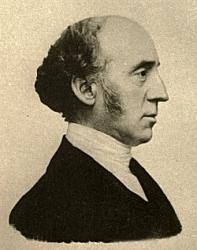Planning worship?
Check out our sister site, ZeteoSearch.org,
for 20+ additional resources related to your search.
- |
User Links
Search Results
Daylight Fades
Author: Peter J. Scagnelli, b. 1949 Meter: 8.7.8.7 D Appears in 2 hymnals First Line: Daylight fades in days when deathless Topics: Easter Vigil ; Easter; Easter 3, Year A; Easter 3, Year B; Easter Season; Faith; Light; Paschal Mystery; Peace; Praise; Victory over Sin and Death Scripture: Luke 24:28-35 Used With Tune: DOMHNACH TRIONOIDE
Daylight Fades
HYMN TO JOY
Meter: 8.7.8.7 D Appears in 530 hymnals Composer and/or Arranger: Ludwig van Beethoven, 1770-1827; Edward Hodges, 1796-1867 Tune Key: G Major or modal Incipit: 33455 43211 23322 Used With Text: Daylight Fades
HYMN TO JOY
DOMHNACH TRIONOIDE
Meter: 8.7.8.7 D Appears in 4 hymnals Composer and/or Arranger: Richard Proulx, b. 1937 Tune Sources: Gaelic Meldoy Tune Key: f minor Incipit: 12332 71112 33445 Used With Text: Daylight Fades
DOMHNACH TRIONOIDE
Daylight Fades
Author: Peter J. Scagnelli, b. 1949 Hymnal: Worship (3rd ed.) #448 (1986) Meter: 8.7.8.7 D First Line: Daylight fades in days when deathless Topics: Easter Vigil ; Easter; Easter 3, Year A; Easter 3, Year B; Easter Season; Faith; Light; Paschal Mystery; Peace; Praise; Victory over Sin and Death Scripture: Luke 24:28-35 Languages: English Tune Title: DOMHNACH TRIONOIDE
Daylight Fades
Daylight Fades
Author: Peter J. Scagnelli, b. 1949 Hymnal: RitualSong #597 (1996) Meter: 8.7.8.7 D First Line: Daylight fades in days when deathless Topics: Easter; Faith; Paschal Mystery; Peace; Praise Scripture: Luke 24:28-35 Languages: English Tune Title: HYMN TO JOY
Daylight Fades
Richard Proulx
1937 - 2010 Person Name: Richard Proulx, b. 1937 Harmonizer of "DOMHNACH TRIONOIDE" in Worship (3rd ed.) Richard Proulx (b. St. Paul, MN, April 3, 1937; d. Chicago, IL, February 18, 2010). A composer, conductor, and teacher, Proulx was director of music at the Holy Name Cathedral in Chicago, Illinois (1980-1997); before that he was organist and choirmaster at St. Thomas' Episcopal Church in Seattle, Washington. He contributed his expertise to the Roman Catholic Worship III (1986), The Episcopal Hymnal 1982, The United Methodist Hymnal (1989), and the ecumenical A New Hymnal for Colleges and Schools (1992). He was educated at the University of Minnesota, MacPhail College of Music in Minneapolis, Minnesota, St. John's Abbey in Collegeville, Minnesota, and the Royal School of Church Music in England. He composed more than 250 works.
Bert Polman
Richard Proulx
Ludwig van Beethoven

1770 - 1827 Person Name: Ludwig van Beethoven, 1770-1827 Composer of "HYMN TO JOY" in RitualSong A giant in the history of music, Ludwig van Beethoven (b. Bonn, Germany, 1770; d. Vienna, Austria, 1827) progressed from early musical promise to worldwide, lasting fame. By the age of fourteen he was an accomplished viola and organ player, but he became famous primarily because of his compositions, including nine symphonies, eleven overtures, thirty piano sonatas, sixteen string quartets, the Mass in C, and the Missa Solemnis. He wrote no music for congregational use, but various arrangers adapted some of his musical themes as hymn tunes; the most famous of these is ODE TO JOY from the Ninth Symphony. Although it would appear that the great calamity of Beethoven's life was his loss of hearing, which turned to total deafness during the last decade of his life, he composed his greatest works during this period.
Bert Polman
Ludwig van Beethoven
Edward Hodges

1796 - 1867 Person Name: Edward Hodges, 1796-1867 Arranger of "HYMN TO JOY" in RitualSong Born: July 20, 1796, Bristol, England.
Died: September 1, 1867, Clifton, Bristol, England.
Buried: Church of St. Mary the Virgin, Stanton Drew (about eight miles south of Bristol).
Hodges’ musical gift showed itself at an early age; by 1819, he was playing the organ at St. James’ Church in Bristol, and at St. Nicholas’, 1821-1838. He also had an interesting mechanical bent, and spurred several technical improvements in organ design. He composed a number of services and anthem pieces, and Cambridge University awarded him a doctorate in music in 1825.
Hodges eventually emigrated, accepting a post at the cathedral in Toronto, Canada, in 1838. The next year, he became music director at Trinity Parish in New York City. He became the organist at Trinity Church when it opened in 1846 (the church had its organ built to his specifications). He retired for health reasons in 1859, and returned to his native England in 1863. Hodges’ works include:
An Apology for Church Music and Musical Festivals, in Answer…to the Standard and the Record (London: 1834)
Essays on the Objects of Musical Study (Bristol, England: 1838)
An Essay on the Cultivation of Church Music (New York: 1841)
Contributions to the Quarterly Musical Magazine & Musical World
Trinity Collection of Church Music (Boston, Massachusetts: 1864) (editor)
Music--
BRISTOL
GLOUCESTER
HABAKKUK
HYMN TO JOY
--www.hymntime.com/
Edward Hodges


 My Starred Hymns
My Starred Hymns

